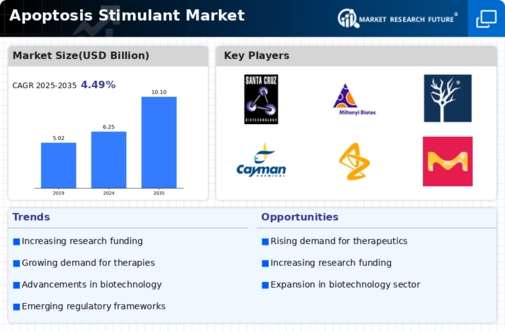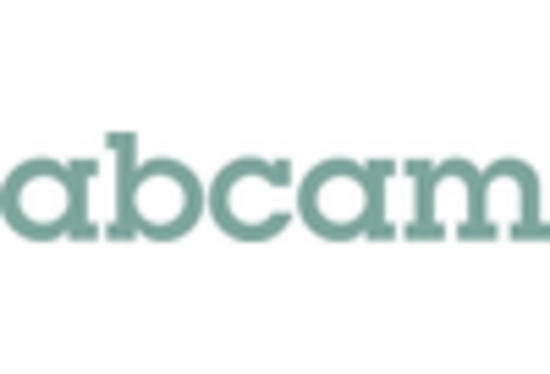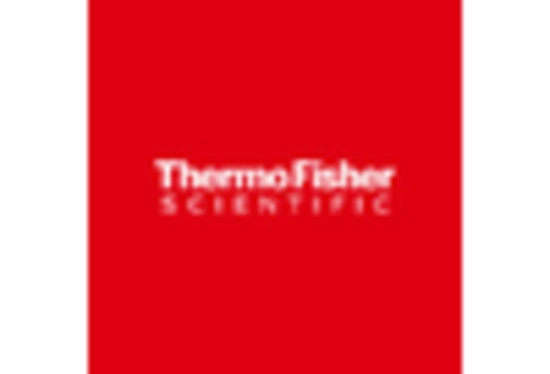Advancements in Drug Development
Innovations in drug development are significantly influencing the Apoptosis Stimulant Market. The emergence of novel compounds that can effectively trigger apoptosis in resistant cancer cells is reshaping treatment paradigms. Recent studies have highlighted the potential of small molecules and biologics that target apoptotic pathways, leading to improved patient outcomes. The market is witnessing a surge in clinical trials focusing on these new agents, with over 150 trials currently registered worldwide. This influx of research not only enhances the understanding of apoptosis mechanisms but also fosters collaboration between pharmaceutical companies and research institutions, thereby accelerating the development of effective apoptosis stimulants.
Rising Incidence of Chronic Diseases
The rising incidence of chronic diseases, particularly cancer and neurodegenerative disorders, is a significant driver of the Apoptosis Stimulant Market. As the global population ages, the prevalence of these diseases is expected to increase, leading to a higher demand for effective treatment options. According to recent statistics, cancer cases are projected to rise by 50% by 2040, necessitating innovative therapeutic approaches that can induce apoptosis in cancer cells. This trend is prompting pharmaceutical companies to focus on developing apoptosis stimulants as part of their therapeutic portfolios, thereby contributing to market growth. The increasing burden of chronic diseases underscores the urgent need for effective therapies that can target apoptotic pathways.
Growing Demand for Targeted Therapies
The Apoptosis Stimulant Market is experiencing a notable increase in demand for targeted therapies, particularly in oncology. As cancer treatment evolves, there is a shift towards therapies that specifically induce apoptosis in malignant cells while sparing healthy tissues. This trend is supported by advancements in molecular biology and a deeper understanding of cancer cell signaling pathways. The market for apoptosis stimulants is projected to reach USD 2.5 billion by 2026, reflecting a compound annual growth rate of approximately 8%. This growth is indicative of the increasing reliance on precision medicine, which aims to tailor treatments based on individual patient profiles, thereby enhancing therapeutic efficacy and minimizing side effects.
Increased Awareness of Apoptosis Mechanisms
There is a growing awareness of the mechanisms of apoptosis and their implications in various diseases, which is driving the Apoptosis Stimulant Market. Educational initiatives and scientific publications are shedding light on the role of apoptosis in cancer, neurodegenerative disorders, and autoimmune diseases. This heightened awareness is leading to increased funding for research and development in apoptosis-related therapies. As a result, the market is expected to expand, with investments in apoptosis research projected to exceed USD 1 billion by 2025. This trend underscores the importance of understanding apoptosis not only as a therapeutic target but also as a fundamental biological process.
Regulatory Support for Innovative Therapies
The Apoptosis Stimulant Market is benefiting from enhanced regulatory support for innovative therapies. Regulatory agencies are increasingly recognizing the potential of apoptosis stimulants in treating various diseases, particularly cancer. This support is manifested in expedited review processes and the establishment of frameworks for the approval of novel therapeutics. For instance, the FDA has introduced initiatives to facilitate the development of breakthrough therapies that target apoptotic pathways. This regulatory environment is likely to encourage pharmaceutical companies to invest in the development of apoptosis stimulants, thereby accelerating their entry into the market and expanding treatment options for patients.

















Leave a Comment